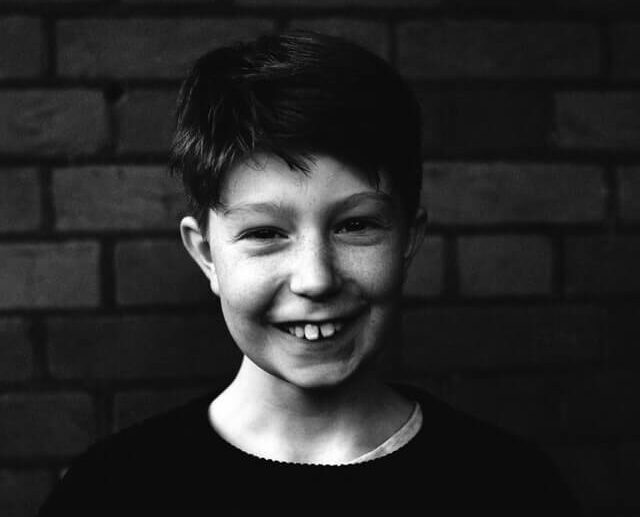
Table of Contents
Atypical autism is a developmental disorder that has some of the symptoms of autism, but not enough to meet the criteria for autism spectrum disorder. Read on to learn more about atypical autism, the most common symptoms, and available treatments.
What Is Atypical Autism?
Atypical autism is one of the official autism diagnoses that were used before the introduction of the term autism spectrum disorder. It was considered to be a milder form of autism that didn’t necessarily require therapy. Because it didn’t meet the criteria for the recognized autism disorder, atypical autism was categorized as a Pervasive Developmental Disorder-Not Otherwise Specified (PDD-NOS).
Today, autism spectrum disorder is the only diagnostic category used for autism. However, the term atypical autism is still occasionally used to describe children who have only some symptoms of autism. This condition is also referred to as autistic tendencies, autistic traits, and subthreshold autism.
Keep on reading to learn more about pervasive developmental disorders.
What Are Pervasive Developmental Disorders?
Pervasive developmental disorders was a category of developmental disorders characterized by impaired communication and socialization skills, including:
- Autism
- Asperger’s Syndrome
- Childhood Disintegrative Disorder
- Rett’s Syndrome
- Pervasive Developmental Disorder Not Otherwise Specified (PDD-NOS)
Symptoms such as communication difficulties, limited social skills, repetitive behaviors, and unusual responses to sensory information are common for all PDD diagnoses, although children with these conditions vary widely in abilities, intelligence, and behaviors.
Pervasive developmental disorders were removed from the official classification in 2013 and this term is no longer being used. The five conditions listed above are now combined under the umbrella of autism spectrum disorder.
When Can Atypical Autism Be Diagnosed?
In 2013, the American Psychiatric Association published the 5th version of the Diagnostic and Statistical Manual of Mental Disorders, in which the PDD and PDD-NOS categories were removed. As a consequence, most doctors in the United States no longer diagnose children with atypical autism.
But although atypical autism is not considered a separate diagnosis anymore, there are of course children who meet the description of this condition. Below, we list the symptoms of atypical autism you should look out for.
The Symptoms of Atypical Autism
Autism typically affects three areas:
- Social behavior
- Verbal and non-verbal communication
- Flexible thinking and behavior.
Children who are diagnosed with atypical autism experience some symptoms of autism, but not necessarily across all of these three categories. In addition, they have milder cognitive, developmental, and social delays and fewer stereotypical autistic behaviors, such as repetitive actions and obsessions, than their peers on the spectrum.
Symptoms may include:
- Slow development of speech and language comprehension
- Lack of meaningful language
- Verbal and nonverbal communication issues
- Sensitivity to taste, sight, sound, smell, and touch
- Irregular motor development
- Normal skill development in some areas and delayed development in others
- Repetitive behaviors
- Inappropriate social behavior
- Lack of empathy
- Avoiding eye contact
- Inability to form age-appropriate peer friendships
- Difficulty maintaining a conversation
- Learning difficulties
- Difficulties concentrating
- Unusual likes and dislikes
- Excessive interest in specific subjects, such as trains, machines, or animals
- Lack of symbolic and pretend play
- Failure to share attention like pointing at something of interest
- Difficulty accepting changes.
While autism is often diagnosed around the age of three or earlier, symptoms in children with atypical autism may appear much later.
Diagnosing Atypical Autism
If you think that your child might have symptoms of atypical autism, you should talk to their primary care physician. The physician will refer your child to a developmental pediatrician, child neurologist, psychiatrist, or psychologist. The specialist will then perform a comprehensive evaluation of your child’s development and behavior and make a diagnosis.
However, you should keep in mind that since atypical autism is no longer used as an official diagnosis, it will most probably not be diagnosed as such by your child’s physician. Instead, your child will be classified as being on the autism spectrum and given a severity rating, depending on the quantity and intensity of autistic traits. Subsequently, your child will receive an in-depth diagnosis that will be used to develop a personalized therapy plan adapted to their individual needs.
Challenges in diagnosing atypical autism
Children with atypical autism display great variations in abilities, which can make diagnosing this condition challenging. What’s more, atypical autism may be hard to detect because its symptoms are often mild and less disruptive than those of classical autism.
Lastly, atypical autism is not to be confused with high-functioning autism, which describes autistic children who have more advanced communication skills and higher cognitive functioning than the others on the spectrum.
If your child is diagnosed with autism spectrum disorder, early intervention is key to improving cognitive, social, and developmental skills. Here’s how ABA therapy can help.
How Can ABA Help a Child with Autism?
Even if your child is diagnosed with what would in the past be considered atypical autism with only mild symptoms, the recommended treatment will be similar to that for autism spectrum disorder. Standard treatments that are applied across the spectrum include behavior and developmental therapy, speech or language therapy, as well as occupational and physical therapies.
What is ABA therapy?
Applied behavior analysis (ABA) is a type of behavioral therapy that focuses on changing negative behaviors and reinforcing positive ones. ABA therapy is used to build and improve social and communication skills in children with autism, such as:
- Understanding social cues, for example, facial expressions and body language
- Learning social skills like responding to questions and initiating conversations
- Following directions and instructions
- Reducing problematic behaviors including tantrums
- Learning basic academic and pre-academic skills.
With more than a 90% improvement rate, ABA therapy is considered to be one of the most successful interventions for autism. In fact, with early intervention, over 50% of children are able to reach the development level where they are almost indistinguishable from their neurotypical peers.
How does it work?
ABA therapy breaks down the essential skills that a child needs to learn or improve into small, concrete steps. It then builds toward more significant changes in functioning and independence levels.
ABA therapy uses positive reinforcement in the form of rewards, praise, and other incentives. It is based on the principle that when a desired behavior is followed by a motivator, such as a special toy or activity, the child will be more likely to repeat the action. Over time, this method leads to positive behavioral changes in children with autism.
GoldenCare ABA therapy
GoldenCare Therapy provides targeted ABA treatment based on your child’s individual strengths and weaknesses. Our experienced therapists will work one-on-one with your child in your home, daycare, school, or another safe environment that encourages learning.
GoldenCare Therapy interventions are based on thorough assessments done by our developmental specialists that include factors such as your child’s behavioral history, autism symptoms, communication patterns, social competence, and developmental stage. Our therapists will break down each of these goals into smaller steps that will be easy for your child to master.
Our ABA therapy sessions typically include a combination of fun activities, play, direct instructions, adaptive skills training, and parent guidance. The GoldenCare Whole Family approach allows the therapy team to work closely with the child’s family members and make them an essential part of the therapy program.
If you are ready to work with the best ABA therapy provider in New York, New Jersey or Indiana, give us a call at (732) 402-0297. Our dedicated team is ready to help and we will treat you like family.
- Autism Routine Disruption in Adults: Coping Tips - July 16, 2024
- Autism and Obsession: An Overview - July 16, 2024
- Autism and Taking Clothes Off: Management Tips - July 16, 2024



